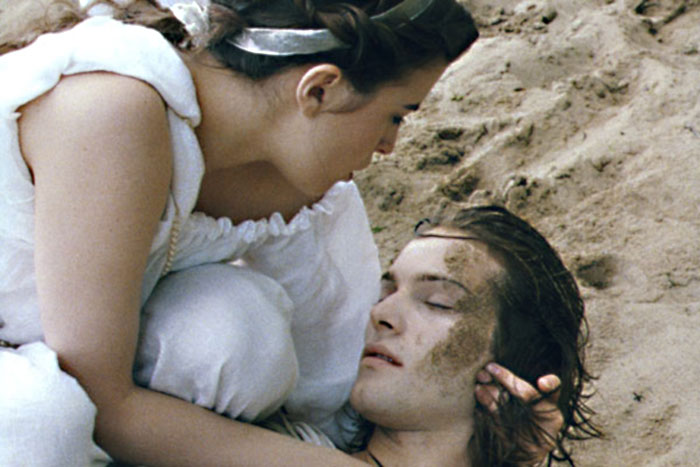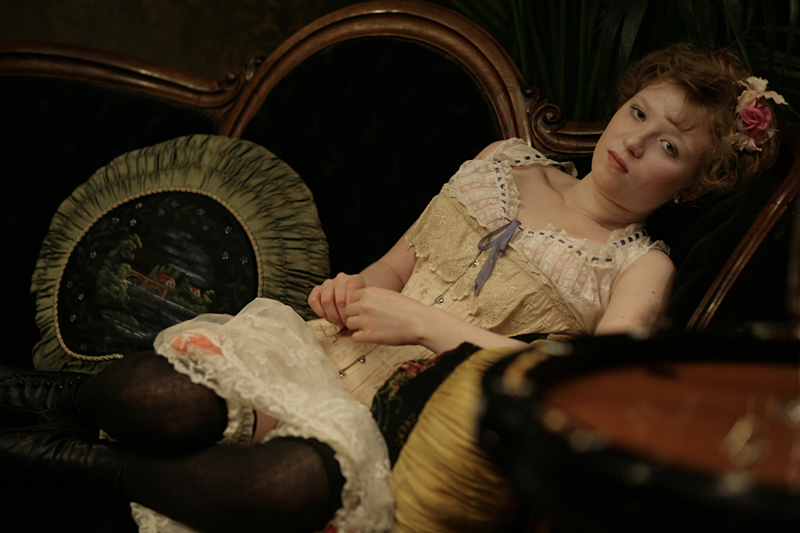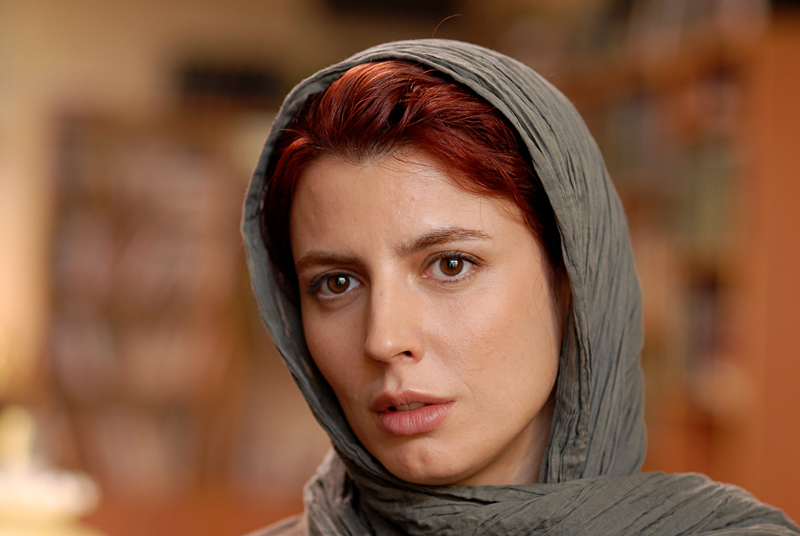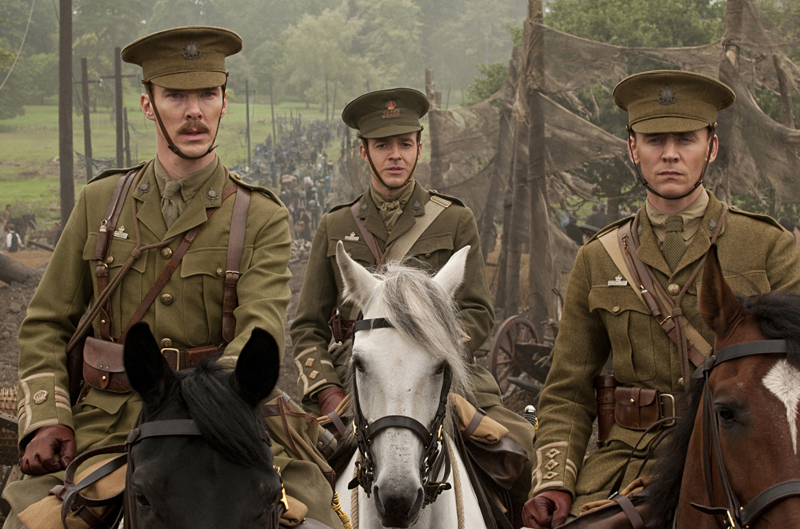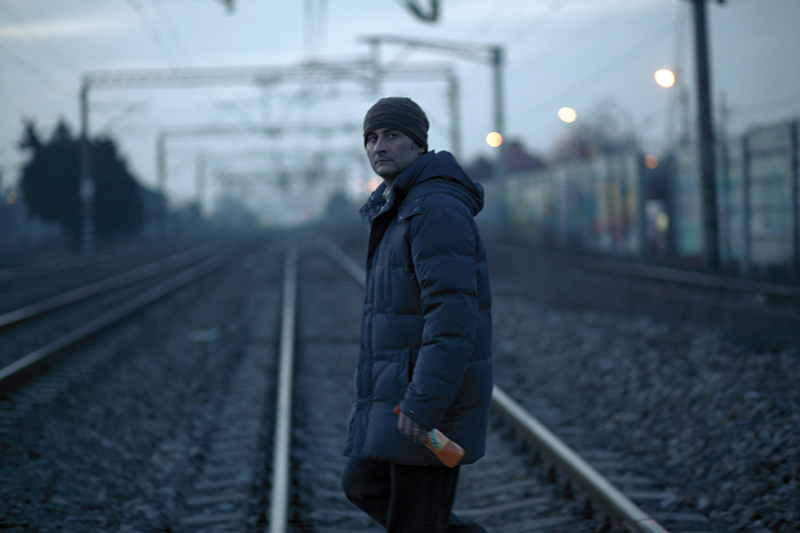A film that Eric Rohmer has suggested will be his last, Astrea and Celadon is a costume pageant that serenely conflates two—or perhaps three—historical periods. The source is Honoré d’Urfé’s 17th-century pastoral romance, itself set in an imagined fifth-century Gaul; the feel, however, is oddly contemporary. At once silly and straight-faced, Astrea and Celadon is a paradoxical experience. The comely shepherdess Astrea (Stéphanie Crayencour) sees her beautiful beau Celadon (Andy Gillet) “making merry” with another girl at a rustic fete. Misinterpreting this ruse (designed to fool his disapproving parents), she forbids Celadon to ever speak to her again. He straightaway attempts to drown himself in the river, but, unbeknownst to Astrea, is rescued downstream by a group of lovely nymphs. Taken to their castle, lovelorn Celadon imagines himself in heaven—as well he might—and, for reasons necessary to propel the narrative to its logical conclusion, disguises himself as a girl. The result is not so far from Some Like It Hot. This open-air talkathon is of a piece with the rest of Rohmer’s work: Throughout human history, he suggests, attractive young people have discussed at length the nature of love, truth, and fidelity. And the movie’s gravity has the effect of raising those career-long concerns to cosmic heights.
The Romance of Astrea and Celadon: Eric Rohmer in the 17th Century
